Lady Be Good
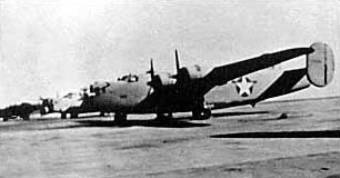
Lady Be Good on ramp prior to her departure overseas.
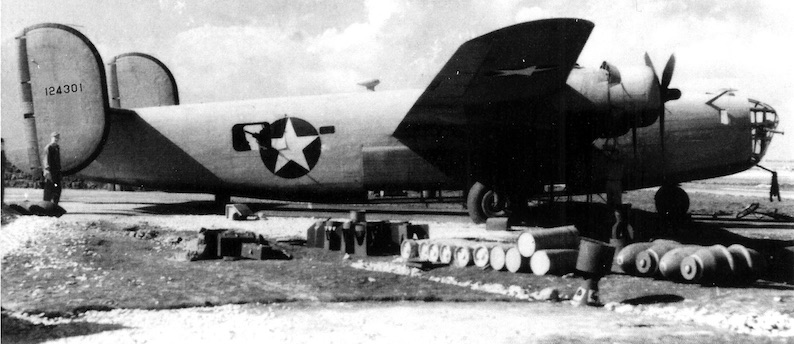
Another photo of 41-24301 prior to her overseas departure. Photo from Samuel Rose.
Lady Be Good was the name of a 1924 Broadway musical. It was the first successful musical for brothers George and Ira Gershwin. The song with the same name was created for the musical and recorded in 1924 by Fred Astaire with George Gershwin on piano. Click here to hear an instrumental version of this 1924 song.
The B-24D, Serial Number 41-24301, destined to be known as Lady Be Good and one of the most recognizable aircraft from World War II, was manufactured at the San Diego Division of the Consolidated Aircraft Company in the fall of 1942.
The aircraft was ferried to Topeka Army Air Force Base and assigned to the crew of Lt. Samuel D. Rose for overseas deployment in March 1943. Lt. Rose and his crew and their as yet unnamed B-24 arrived at the 376th Bombardment Group base at Soluch, Libya on March 23, 1943. The aircraft and crew were assigned to the 376th's 514th Squadron. She was assigned RCL 64.
On April 4, 1943 another 514th crew consisting of Ist Lt. William J. Hatton, pilot; 2nd Lt. Robert F. Toner, co-pilot; 2nd Lt. Dp. Hays , navigator; 2nd Lt . John S. Woravka , bombardier; T/ Sgt . Harold J. Ripslinger, engineer; T/Sgt. Robert E. LaMotte, radio operator; S/Sgt. Guy E. Shelley, asst. engineer; S/Sgt. Vernon L. Moore, asst. radio operator and S/ Sgt . Samuel E. Adams, tail gunner, departed from Soluch in the Lady Be Good on a high altitude attack on the harbor at Naples, Italy.
Of the twenty-four B-24s participating in the mission only the Lady Be Good failed to return to Soluch or be accounted for. The only contact with the lost crew was a terse radio distress call shortly after midnight on April 5th.
In February 1959, a British Petroleum oil exploration team discovered the nearly intact "Lady Be Good" 448 miles southeast of Soluch in the untravelled Libyan Desert. Investigation at the crash site confirmed that the crew had bailed out after exhausting their fuel.
The discovery of the wreckage set-off an extensive search for the crew encompassing an area of thousands of square miles. In February 1960, nearly a year after the Lady Be Good reappeared, the remains of five crew members were found 78 miles northwest of the B-24. Leading to the crew's last camp site was a trail of markers and personal equipment left behind as the men trekked northwest in temperatures up to 130 degrees. Ultimately, two additional remains, Sgts. Ripslinger and Shelley, were recovered over 100 miles from the bailout point.
The exceptional preservation of the Lady Be Good after 16 years exposure to one of the earth's most extreme environments prompted the return of samples from the wreckage for technical study. In 1968, Mr. James Walker, a research engineer with McDonnell Douglas Corp., initiated an expedition to the crash site with a Royal Air Force desert rescue team. Components recovered during this expedition subsequently provided invaluable data on the useful life of aerospace materials. Displayed samples from this investigation were donated to the Pima Air & Space Museum, (Tucson, AZ) collections.
James Walker
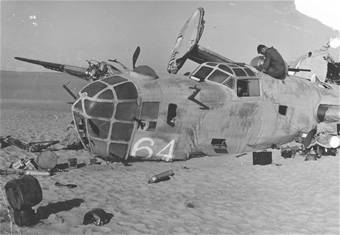
Nose of Lady Be Good at her Libyan crash site.
USAF photo
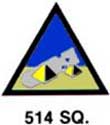
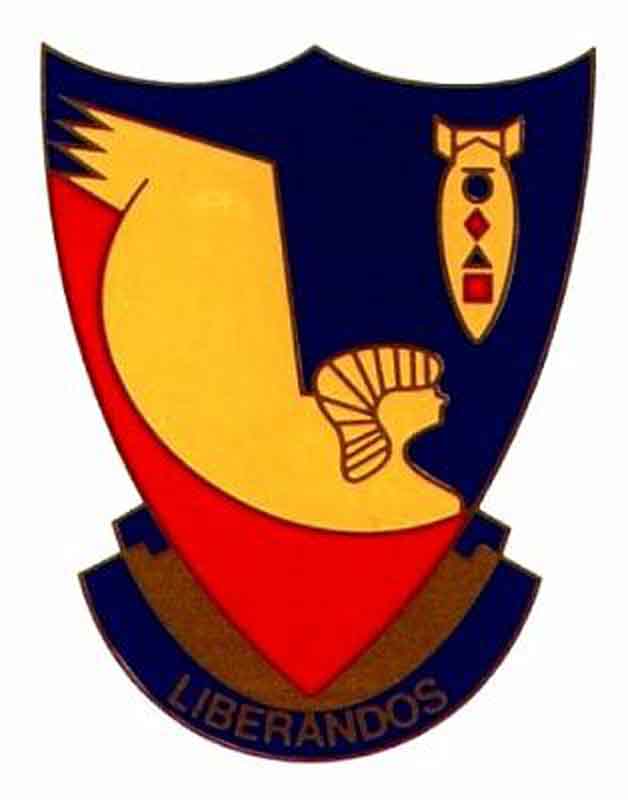
The website 376bg.org is NOT our site nor is it our endowment fund.
At the 2017 reunion, the board approved the donation of our archives to the Briscoe Center for American History, located on the University of Texas - Austin campus.
Also, the board approved a $5,000 donation to add to Ed Clendenin's $20,000 donation in the memory of his father. Together, these funds begin an endowment for the preservation of the 376 archives.
Donate directly to the 376 Endowment
To read about other endowment donation options, click here.
Reunion
NOTE change in the schedule !!
DATES: Sep 25-28, 2025
CITY:Rapid City, SD
HOTEL: Best Western Ramkota Conference Hotel; 2111 North LaCrosse St., Rapid City, SD 57702; 605-343-8500
Click here to read about the reunion details.



















